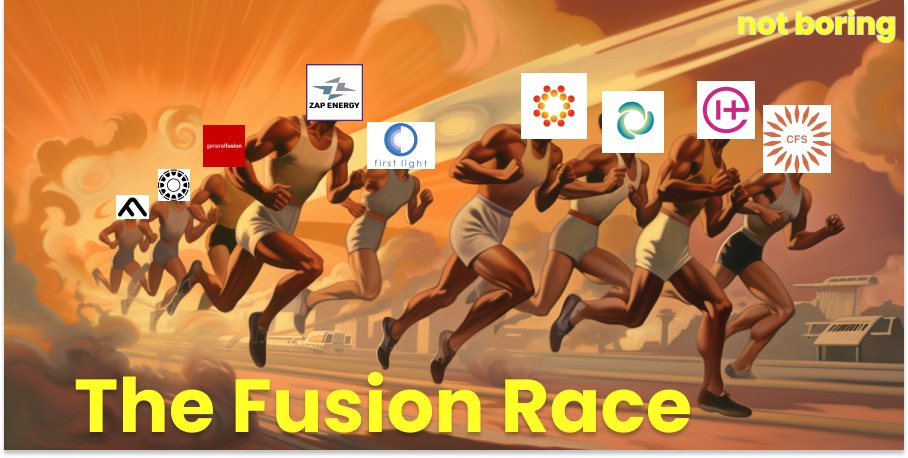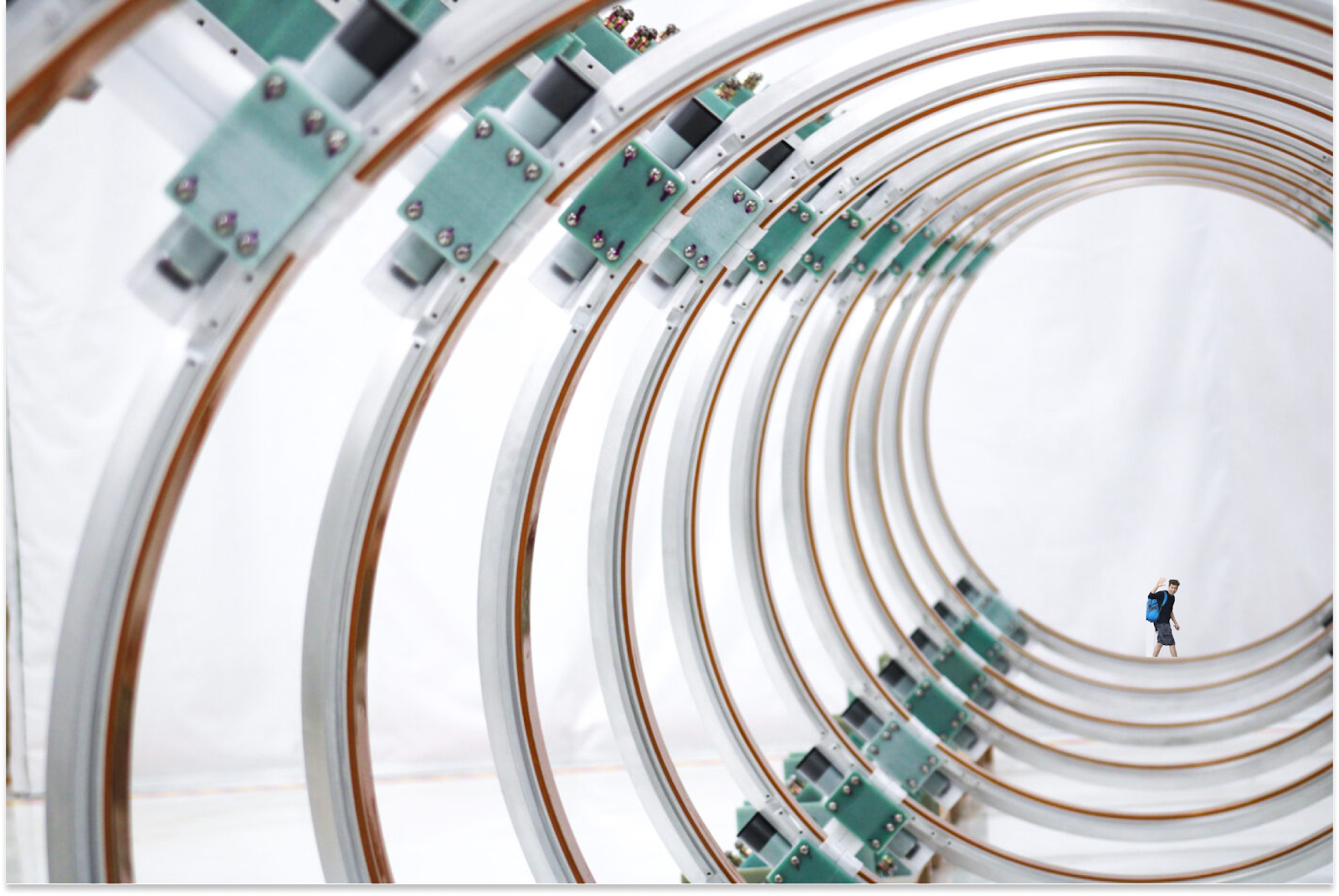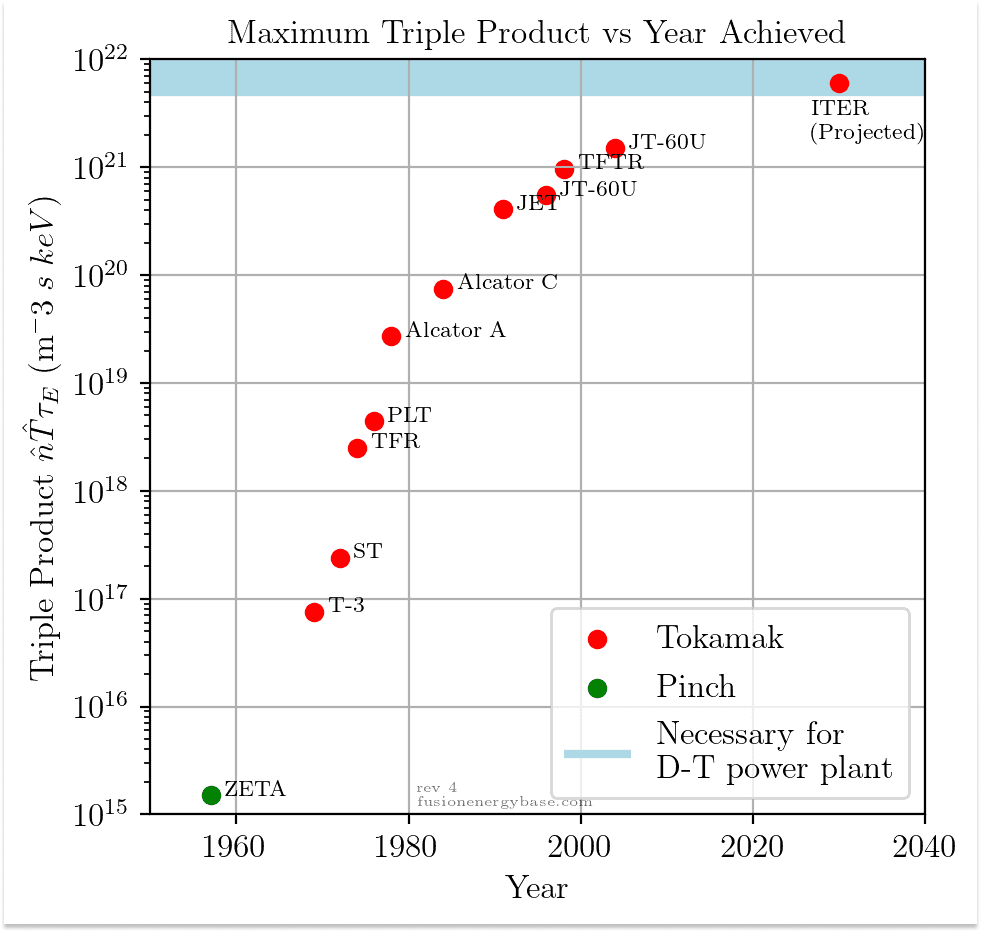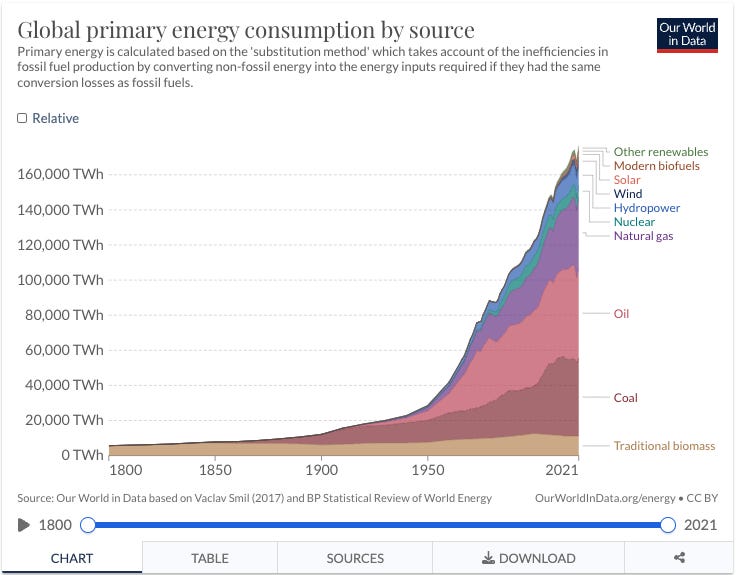Not Boring by Packy McCormick - The Fusion Race
Welcome to the 1,097 newly Not Boring people who have joined us over the past two weeks! If you haven’t subscribed, join 203,901 smart, curious folks by subscribing here: Hi friends 👋, Happy Monday! Grab a coffee, shake off the weekend, and let’s talk fusion. Energy is upstream of everything we write about here at Not Boring. Cheap, abundant energy means economic prosperity, sci-fi brought to life, and even, one day, flying cars. So when Helion announced that it planned to deliver commercial fusion power in 2028, our ears perked up. Luckily, we’d been working on a fusion piece. Rahul Rana (who graduated from Rutgers last weekend – congrats Rahul!!) is both a student of the history of moonshot projects in the United States and smart enough to understand and break down everything going on in the world of fusion. So we decided to team up on a piece explaining how fusion works, where we are in our progress towards commercial-scale fusion, and why the transition from government-funded to private sector should spell acceleration. We are certainly not experts on fusion. Treat this as a ride-along as we learn about the science and history of fusion, where it stands today, and where we might be headed in the coming years, complete with an overview of some of the most promising fusion startups. It’s a topic we expect we’ll hear about and cover a lot more in the years ahead. Whether 2028 is realistic or not, the Fusion Race is on. This piece is meant to be your starting point on one of the next decade’s most important adventures. Read on or click here to jump to the full version online. Let’s get to it. Today’s Not Boring is brought to you by… Wander Wander is one of our most popular sponsors ever…and there’s good reason: the vacation homes are dope. If you’re looking to book a last minute MDW trip or a relaxing getaway this summer, you should check out Wander’s listings. Plus, Wander REIT presents a unique investment opportunity. The REIT just released its Q1 results, and it delivered as promised: 5.1% appreciation and 8% annualized income. As a Wander REIT investor myself, I just received my first dividend! Wander is a network of smart vacation homes that come with inspiring views, modern workstations, restful beds, hotel-grade cleaning and 24/7 concierge service –– combining the quality of a luxury hotel with the space and comfort of a vacation home, only better. All of the Wander homes look like they are straight out of one of those luxury car commercials. As a Not Boring reader, you can use promo code notboring for $300 off your next trip. (offer expires Monday 6/5 at 11:59pm). Explore now. But that’s only part of the story. Wander recently launched Wander REIT –– a first-of-its-kind vacation rental REIT that gives you the chance to own a piece of their magical portfolio of homes. With Wander REIT, accredited investors have the opportunity to earn income and diversify their portfolio without the headache and hassle of buying a property, renting it out, or maintaining it. The Fusion RacePacky McCormick x Rahul Rana Two weeks ago, a startup funded and chaired by Sam Altman announced a big partnership with Microsoft. This time, instead of investing in Sam’s brain, Microsoft committed to buying his power. Specifically, according to the press release:
While Sam Altman selling to Microsoft invites obvious OpenAI comparisons, the better analogy may be to one of the companies founded by Sam’s erstwhile OpenAI co-founder: SpaceX. Like SpaceX, Helion set an absurdly aggressive timeline in an industry not recently known for its speed. Like SpaceX, Helion is the beneficiary of billions of dollars and decades’ worth of government-funded research, of global competition and cooperation in the pursuit of civilization-scale goals. And like SpaceX, Helion may mark a turning point in one of the coming decades’ most consequential industries, the baton handoff from the measured and fundamental world of government and academia into the chaos and haste of the market. We’re using Helion liberally here. We don’t know who will win Fusion Race 2.0, and this isn’t a winner-take-all market. But Helion is a worthy stand-in for the growing number of privately funded fusion companies racing to bring the power of the stars to the earth’s electric grid, economically. Imagine a bizarro relay marathon in which one runner carries the baton for the first 26.0 miles, opens up a backpack full of batons, and hands them out liberally to a waiting horde of sprinters to dash all-out for the final 0.2 miles. That’s the best analogy we can come up with for this moment in the Fusion Race. Global governments are the marathon runner. From the race to develop thermonuclear weapons after World War II, to the $22 billion, 50+ year cooperative ITER reactor currently being built in France, to the National Ignition Facility’s ignition achievement in December 2022, governments have led fusion research efforts for the better part of eight decades. The world’s governments have run a well-paced marathon, producing something akin to a Moore’s Law in fusion for half a century. The triple product – of density, temperature, and time – is the figure-of-merit in fusion, and it doubled every 1.8 years from the late 1950s through the early 2000s, as one type of reactor - tokamaks, a form of magnetic confinement fusion (MCF) - got larger and more powerful. In December, scientists at the government-funded National Ignition Facility (NIF) at Lawrence Livermore made headlines when they achieved fusion ignition, or scientific energy breakeven, for the first time in a controlled environment That is, they got more energy out of the fusion reaction than they spent on the laser energy used to drive it. The NIF used a different approach: inertial confinement fusion (ICF). The world rejoiced – fusion energy is possible! – and then sobered up – it was like a AA battery’s worth of energy and, experts pointed out, commercial-scale fusion power might not arrive for decades. That’s the joke in fusion, that fusion power is “always 30 years away.” Funny joke, to be sure, but it may no longer be true. We’re at the handoff point, from private to public, thanks to improving compute and machine learning, better magnets and materials, the diverse range of technical approaches that are finally becoming feasible, and dramatically increased capital availability for startups. Companies like Helion, Commonwealth Fusion Systems, TAE Technologies, General Fusion, and Zap Energy are the sprinters. Armed with $5 billion in funding, most of which has come in just the past two years, and decades worth of research made feasible by new tools, fusion startups are locked in a mad dash to the finish in what might be called Fusion Race 2.0. At the end stands commercial fusion and a healthy chunk of the $15 trillion global energy market. Magic can happen in this public-to-private handoff. After languishing for decades post-Moon Landing, SpaceX revitalized the space economy and enabled a constellation of new businesses driven by both a sense of adventure and a profit motive. The commercialization of space pulled in timelines for such sci-fi visions as asteroid mining, space manufacturing, space hotels, and even Mars habitation by decades. We don’t pretend to know who the SpaceX of fusion will be – in fact, it may be a confluence of factors more than any one company that unlocks the fusion economy – but we suspect that we’re at a similar point in fusion’s evolution. Commercial fusion may power (some of) our homes within the decade. As humanity embarks on this leg of one of our most important journeys, we thought it would be useful to put together a little primer on what’s at stake, how fusion works, where it’s been, and where we’re heading. We’ll do that today by covering:
To start, let’s all get on the same page about why fusion is important in the first place. Why is Fusion Important?According to Greek mythology, Prometheus defied the gods by stealing fire and bestowing it upon humanity. Humans harnessed the power of fire to construct magnificent cities and propel the growth of their civilization. It’s such an alluring myth that we still use it as a shorthand for human ambition, innovation, and the quest for knowledge in the face of danger to this day. Fusion is the Promethean myth brought to life, minus the liver-eating Caucasian Eagle (we hope). It’s the engine that powers the stars. By wresting the secret of unlimited energy production from the heavens, humanity may once again construct wonders in the physical world and propel the growth of our civilization. A few years ago, it might have been controversial to argue that the world should use more energy. The climate argument thrusted in the opposite direction – consume less energy and transition whatever energy we still need to use to clean, renewable sources like solar and wind. Degrowth is a losing argument, and thankfully, it is in the process of being replaced by a more optimistic one: the call for energy superabundance. Instead of consuming less energy, this argument goes, we should produce unimaginable amounts of clean energy from all of the sources we can: solar, wind, geothermal, nuclear fission, and one day, fusion. With practically unlimited cheap energy, we’ll be able to suck CO2 out of the air, mitigate the effects of climate change, and have enough left over to meaningfully improve the quality of life for billions of people around the world. We like this argument. Energy use is the bound of civilization. If you increase it, civilization grows and progresses. If you limit it, civilization stagnates. If you diminish it, civilization crumbles. Energy is the most fundamental determinant of a society’s success. It feeds us, houses us, wins wars, powers technology, and dictates policy. Even money is a mere proxy for energy. More energy lifts all boats. Numerous studies have found a long-run, direct, causal, and bidirectional relationship between energy consumption and economic growth. Researchers found that a 1% increase in real GDP per capita increases total energy consumption by 0.6%. It works the other way, too—a 0.9% increase in electricity use in OECD countries led to a 1.7% increase in GDP. For non–OECD countries, a 2% annual increase in electricity use increases GDP by 3.8%. Simply put, more energy means more progress, and vice versa, across the board. More energy, and the physical abundance it brings, would spur growth without accelerating inequality. If you’re with us that more energy consumption is a good thing, then we have good news: humans are consuming more energy than ever before. The challenge, of course, is that the sources of energy humanity has ridden to such great heights also happen to be bad for the environment. The CO2, methane, and other greenhouse gasses emitted when they’re burned pose an existential risk to the planet. Even if they didn’t harm the environment, fossil fuels will eventually run out, even if we find increasingly clever ways to dig them up. So the goal is to not just replace fossil fuels with cleaner energy sources, but to produce oodles and oodles of clean, abundant energy, multiples more than we produce and consume today. For much, much more — including how we’ll produce all that clean energy, a history of fusion, and an overview of the startups racing to achieve ignition…If this button breaks, you can find the full essay at Not Boring: Thanks to Rahul for the collaboration and to Dan for editing! That’s all for today! We’ll be back in your inbox a couple times later this week 👀 Thanks for reading, Packy |
Older messages
Weekly Dose of Optimism #43
Friday, May 19, 2023
Frontier, Seaflooding, Alzheimer's Mutations, Reversing Brain Signals, Space Cells
Weekly Dose of Optimism #42
Friday, May 12, 2023
Helion, Nuclear Power, Google Search, Sohn Conference, Pancreatic Cancer Vaccines
Small Applications, Growing Protocols
Tuesday, May 9, 2023
A Small Essay on the Big Potential of Small Apps
Weekly Dose of Optimism #41
Friday, May 5, 2023
Khanmigo, GPT Brain Reading, Fifth State of Matter, Forever Chemicals, Rheumatoid Arthritis, Embiid
Evolving Minds
Monday, May 1, 2023
Anaximander, AI, and the Co-Evolution of Technology and Minds
You Might Also Like
🔮 $320B investments by Meta, Amazon, & Google!
Friday, February 14, 2025
🧠 AI is exploding already!
✍🏼 Why founders are using Playbookz
Friday, February 14, 2025
Busy founders are using Playbookz build ultra profitable personal brands
Is AI going to help or hurt your SEO?
Friday, February 14, 2025
Everyone is talking about how AI is changing SEO, but what you should be asking is how you can change your SEO game with AI. Join me and my team on Tuesday, February 18, for a live webinar where we
Our marketing playbook revealed
Friday, February 14, 2025
Today's Guide to the Marketing Jungle from Social Media Examiner... Presented by social-media-marketing-world-logo It's National Cribbage Day, Reader... Don't get skunked! In today's
Connect one-on-one with programmatic marketing leaders
Friday, February 14, 2025
Enhanced networking at Digiday events
Outsmart Your SaaS Competitors with These SEO Strategies 🚀
Friday, February 14, 2025
SEO Tip #76
Temu and Shein's Dominance Is Over [Roundup]
Friday, February 14, 2025
Hey Reader, Is the removal of the de minimis threshold a win for e-commerce sellers? With Chinese marketplaces like Shein and Temu taking advantage of this threshold, does the removal mean consumers
"Agencies are dying."
Friday, February 14, 2025
What this means for your agency and how to navigate the shift ͏ ͏ ͏ ͏ ͏ ͏ ͏ ͏ ͏ ͏ ͏ ͏ ͏ ͏ ͏ ͏ ͏ ͏ ͏ ͏ ͏ ͏ ͏ ͏ ͏ ͏ ͏ ͏ ͏ ͏ ͏ ͏ ͏ ͏ ͏ ͏ ͏ ͏ ͏ ͏ ͏ ͏ ͏ ͏ ͏ ͏
Is GEO replacing SEO?
Friday, February 14, 2025
Generative Engine Optimization (GEO) is here, and Search Engine Optimization (SEO) is under threat. But what is GEO? What does it involve? And what is in store for businesses that rely on SEO to drive
🌁#87: Why DeepResearch Should Be Your New Hire
Friday, February 14, 2025
– this new agent from OpenAI is mind blowing and – I can't believe I say that – worth $200/month







